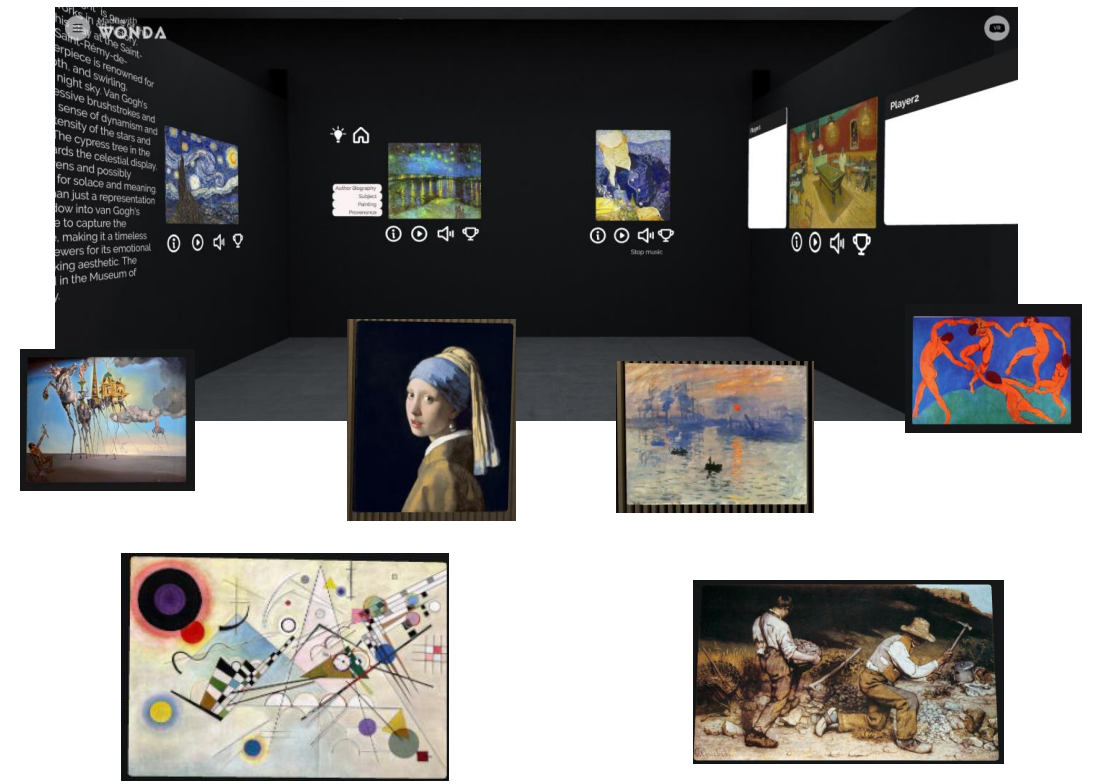VR museum
Published:

Tools: WondaVR
Course: Interaction Design - MAMN25, Lund University
Project Overview
The VR Museum Experience reimagines traditional art appreciation by immersing users in a multi-sensory, interactive virtual environment where they can not only view but step inside paintings. Designed with a strong focus on user research and iterative testing, the experience is intuitive, engaging, and accessible. By leveraging VR technology, the project aims to enhance learning and cultural engagement while expanding access to art for remote and differently-abled users.
| Experience Prototype | See Design Documents |
Key Features & Development Process
1. User-Centered Research Foundation
We conducted a comprehensive research phase to identify the needs and desires of potential users, which laid the foundation for the design.
Qualitative Insights: Affinity Mapping revealed three priority areas
Quantitative Survey and Interviews: While many participants had prior VR museum experience, they often felt constrained by issues such as queues and time limits. A majority expressed strong interest in the ability to “walk into paintings” for a more immersive experience.
2. Immersive Interaction Design
The project aimed to create a seamless and captivating experience. Key features were designed to make the interaction intuitive and engaging:
- Core Interactions:
- Painting “portal” system: Users enter the artwork environments via a portal, becoming fully immersed in the paintings themselves.
- Contextual Information Layering: Tappable information points were added throughout the experience to provide detailed context about the artwork and its history.
- Prototyping Evolution:
- Initial prototypes were built using WondaVR, focusing on a single painting interaction.
- The final version incorporated several new features:
- Multiplayer Art Challenges: A drawing comparison game added an interactive and competitive element.
- Environment Switching: Users could explore multiple gallery spaces, offering variety and exploration.
- Enhanced UI with Help System: A lightbulb icon provides hints to guide users through the experience.
